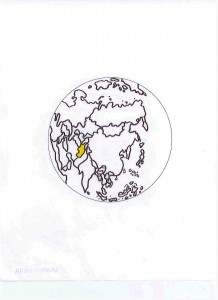AFGHANISTAN
A. THE COUNTRY
The Islamic Republic of Afghanistan is a landlocked country in
South-Central Asia. Shattered by decades of war, the countryside was
bombed and still contains over one million landmines and other
undetonated artillery. The ongoing conflict destroyed much of the
infrastructure, and rebuilding of public buildings is a focus.
Extensive gas and mineral deposits offer potential lucrative exports.
One-third of the nation’s GDP has come from production of opium.
Investment of extensive foreign aid and millions of former refugees
returning have generated an influx of funds. The conflict with armed
opposition groups including Taliban, continues to stunt recovery and
growth.
B. THE PEOPLE
The population is over 29 million and official languages are Pashtu
(used by 50%) and Dari (Afghan Persian, used by 70%).
No comprehensive census or careful ethnic survey has been made for
decades. Afghan refugees are ~2 million in Iran, ~2 million in Pakistan
and smaller numbers around the world. As many as 4.5 million have
returned to Afghanistan since 2001 when an International Security
Assistance Force was created to assist the Karzai administration.
Afghans perceive poverty and lack of security to be their greatest
problems.
C. RELIGIONS AND CHRISTIANITY
The Taliban’s takeover of the country imposed a deviant expression of
strict Wahhabist Islam. While there is limited freedom to practice
their religions (such as Shi’a Islam, Sikhism and Hinduism), there
appears to be no freedom to propagate another faith or to convert from
Islam. Shi’a Muslims are 20% of the population. Under 15000 claim to be
Christian, and these are mainly resident foreigners (foreign military
not included). There are no church buildings, where there are 48000
mosques. Afghanistan is one of the least reached countries in the world
and the Church remains almost entirely underground.
Donna Siemens
References:
http://en.wikipedia.org
Operation World, Jason Mandryk. Colorado Springs: Biblica Publishing, 2010.

